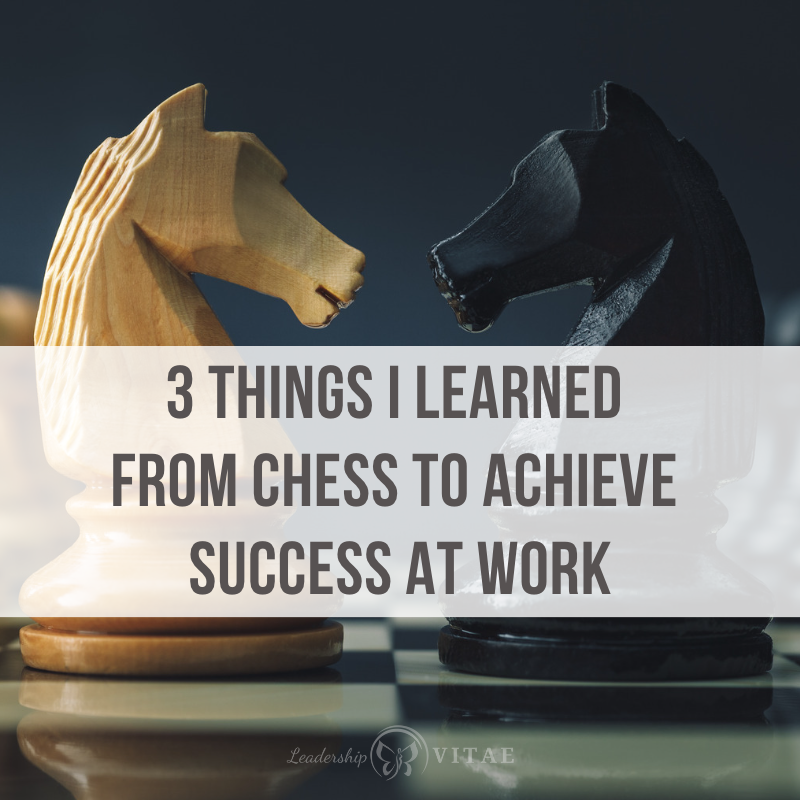
Games were a key part of my formative years. I recall playing (and beating) my father at gin rummy when I was three. Still too young to hold the cards, I had them hidden behind a book, lined out on the table.
The games got harder as I matured. More competitive. They were also deliberate, as my father used them to help build strategic thinking into my skillset. It’s come in very handy in my 30 years of change leadership.
While my work involves very real people, it’s often necessary to use abstract thinking. As a leader, it’s critical to be aware of the skills, needs, desires, and circumstances of those around me. As a problem solver, sometimes I need to think in terms of those characteristics vs the human to get to an answer. Otherwise, I might be unduly influenced by emotion.
To support abstract thinking, I have often thought of chess as a good analogy. When we look to solve a problem, we are trying to navigate the current environment to achieve a goal. There are many players involved, from customers and stakeholders, to team members, leaders, vendors, and peers. To “win,” everyone needs to do their part to progress across the board to the desired outcome.
While this holds at the surface level, the reality is that people are rarely pawns and we do not control everything at play. So what can we learn from chess to help us achieve successful outcomes?
Own the board
No matter who we are or our role, it’s critical to remain empowered. That may be difficult at times, depending on our circumstances. For example, if we work for someone who is micro-managing, we may feel like all we do is take orders.
How do we remain empowered? By remembering that we own the board. Yes, we all work for someone (even the CEO works at the discretion of a board) and we may not have directly leadership of those we need to achieve our desired outcomes. However, we can all internalize the idea that it’s our board and everyone else is just a piece in play.
To own the board, we need to be aware of a few key pieces of information.
- What am I trying to achieve? We can only move across the board and “win” if we know what success looks like.
- Who’s on the board? What team members, peers, stakeholders, etc are available to help me?
- What obstacles will I face? As we move across the board, there are other players and situations we will have to navigate that might stand in the way.
With this information, we can ideally position and engage with others in ways that move us toward our desired outcome. If we see an obstacle coming, who on the board can offer advice or step in to help? When the way is clear, we can press forward if each step is clear towards the “win.”
By realizing we have others available to us to achieve our desired outcomes, and looking at the entirety of the board, we can retain a sense of empowerment even in a challenging environment.
Don’t be a pawn
We have a role to play in the outcome we desire. As we look at all the players on the board, we need to be aware of the role we are playing as well. It may be tempting to think of ourselves as the King or Queen on the board, able to make the most flexible moves.
The reality is we rarely can make all the moves we want the way we’d like. Our sphere of influence, position/power, and other factors influence just how much flexibility we have.
We may dream of being a King or Queen someday to increase our plays. However, we can often make more moves than we think, even where we are today. There’s only one role we want to be careful to avoid.
We don’t want to be a pawn.
Looking at the board, we must be mindful of how to best move across. When to press forward and how to do it in a way that doesn’t end up with a piece taken out of the game. Especially if that’s US!
A pawn has one direction to move – forward. It can be tentatively (one step) or aggressively (two), but still only forward. Sometimes, the best strategy is to pull back or go to the side. If we’re going to emulate any piece on the board, it should be one that allows us to take risks and pull back when we need to rethink our approach.
Unfortunately, if we aren’t careful, we can still find ourselves in the position of pawn. This is why it’s so critical to know all the players on the board and know them well.
Work with natural strengths and tendencies
While it may be tempting to think of ourselves as a King or Queen on the board, we are likely working for more senior people that think of us as being members of their realm. No matter their seniority, position, or power, those leaders are at our disposal when we remember it’s our board.
Each person has preferences and natural tendencies. For example, maybe someone we know tends to get into the weeds and someone else is highly political. Knowing this information, we can play to their predispositions. Leverage how they will likely show up to help us move forward toward our goals.
That same person who tends to be highly political might be able to give us insight into other leaders and their interests. Help us turn a potential adversary and obstacle into an ally and advocate. When we lean into the interests and tendencies of those around us and point them toward our goals, it can accelerate the path forward.
Beware. Those same folks can quickly become an obstacle if we try to push them to move in opposition to their predisposition. They may remind us of our role and limit movement, turning us into the very pawn we don’t want to be.
Mindset matters
If we spend all of our time taking direction from others, we can quickly find ourselves in a pawn mindset. While it may be difficult, depending on our role and leader, we can elevate our thinking and remember it’s our board.
No matter the outcome we want – whether it’s a specific project success or promotion – our mindset is key to success.
- We can own the board by thinking of what success would look like, who is available to help, and the obstacles we may find along the way.
- We can move forward with a strategic mindset by remembering the entire board is available to us. Sometimes we may need to move sideways or backward first.
- We can leverage the predisposition of those around us to help us achieve our goals. While it may not be obvious, our leaders work for us too, not just the other way around.
Whether you enjoy chess or prefer a good card or board game instead, it is definitely strategic in nature. The ability to see not only what’s in front of you but anticipate the possibilities of what’s ahead. It’s been a while, but if you haven’t seen The Queen’s Gambit and this article appeals to you, I’d definitely recommend it. The way she visualizes a board brings this chess analogy to life.









3 Responses
You could also take this analogy further, by moving from chess player to chess master. A chess master thinks several moves ahead, anticipates what the opponents are likely to do, and is prepared to adjust strategy (but not the overall goal) as necessary.
Excellent point! With experience, we can definitely better “master” our board by seeing patterns and anticipating the moves ahead. Thank you for sharing your perspective.
Really enjoyed this analogy! Thanks for sharing Kristin! Reminded me of a show on Apple TV called “Hello Tomorrow” with an episode titled, “Great Salesmen Make Their Own Turf”. Sometimes we need to take risks and pull back when we need to rethink our approach.